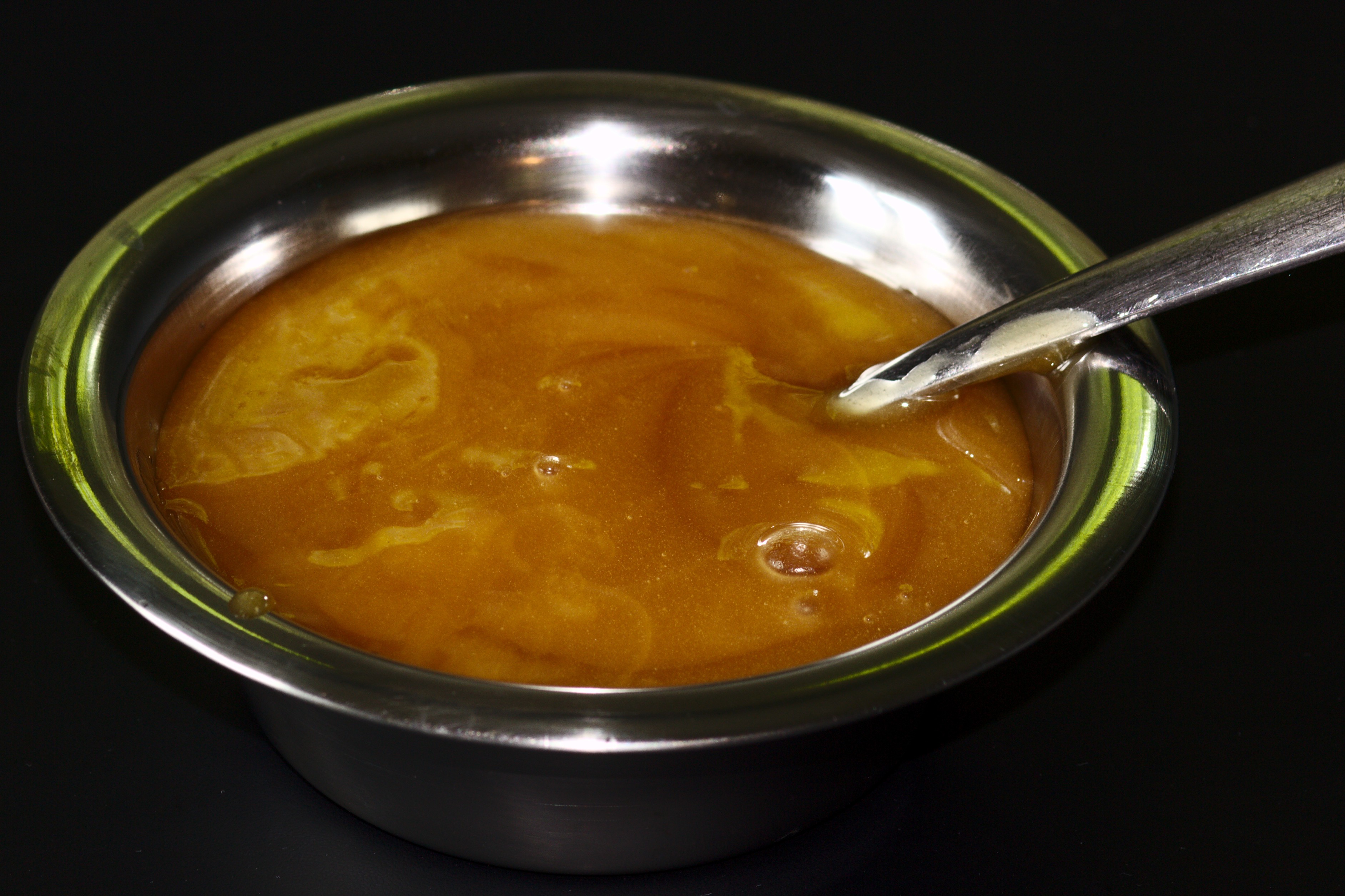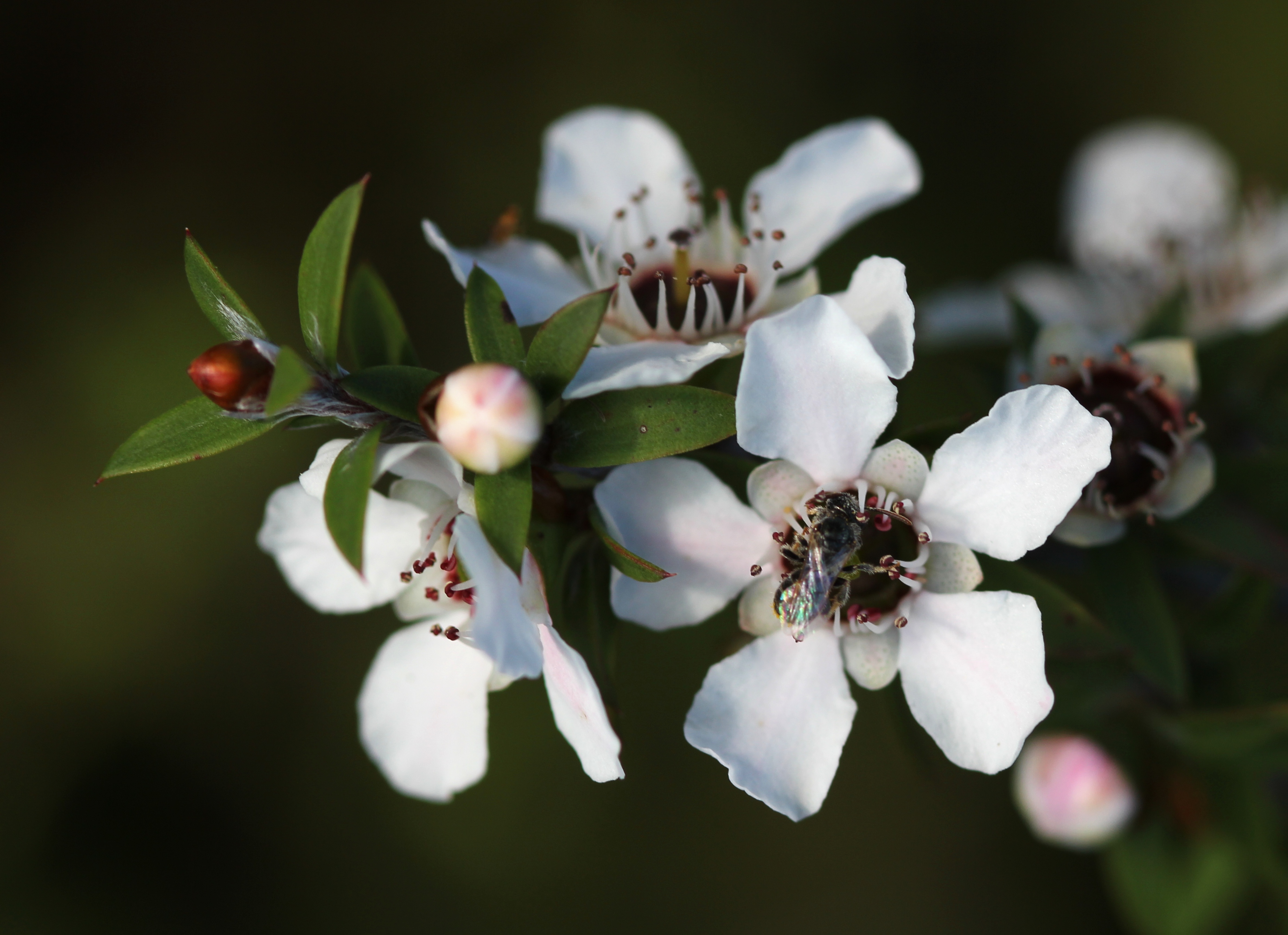Mānuka Honey on:
[Wikipedia]
[Google]
[Amazon]
 Mānuka honey () is a monofloral honey produced from the nectar of the mānuka tree, ''Leptospermum scoparium''.
The mānuka tree is indigenous to
Mānuka honey () is a monofloral honey produced from the nectar of the mānuka tree, ''Leptospermum scoparium''.
The mānuka tree is indigenous to

 Mānuka honey () is a monofloral honey produced from the nectar of the mānuka tree, ''Leptospermum scoparium''.
The mānuka tree is indigenous to
Mānuka honey () is a monofloral honey produced from the nectar of the mānuka tree, ''Leptospermum scoparium''.
The mānuka tree is indigenous to New Zealand
New Zealand () is an island country in the southwestern Pacific Ocean. It consists of two main landmasses—the North Island () and the South Island ()—and List of islands of New Zealand, over 600 smaller islands. It is the List of isla ...
and some parts of coastal Australia
Australia, officially the Commonwealth of Australia, is a country comprising mainland Australia, the mainland of the Australia (continent), Australian continent, the island of Tasmania and list of islands of Australia, numerous smaller isl ...
. The word ''mānuka'' is the Māori name of the tree; however, as with many Māori words, the older spelling ''manuka'' (without a macron) remains relatively common in English.
Identification
Mānuka honey is produced by European honey bees (''Apis mellifera'') foraging on the mānuka (''Leptospermum scoparium''), which evidence suggests originated in Australia before the onset of theMiocene
The Miocene ( ) is the first epoch (geology), geological epoch of the Neogene Period and extends from about (Ma). The Miocene was named by Scottish geologist Charles Lyell; the name comes from the Greek words (', "less") and (', "new") and mea ...
aridity
Aridity is the condition of geographical regions which make up approximately 43% of total global available land area, characterized by low annual precipitation, increased temperatures, and limited water availability.Perez-Aguilar, L. Y., Plata ...
. It grows uncultivated throughout both southeastern Australia and New Zealand.
Mānuka honey is markedly viscous
Viscosity is a measure of a fluid's rate-dependent resistance to a change in shape or to movement of its neighboring portions relative to one another. For liquids, it corresponds to the informal concept of ''thickness''; for example, syrup h ...
due to the presence of a protein or colloid – its main visually defining characteristic, along with its typical dark cream to dark brown colour.
The mānuka tree flowers at the same time as '' Kunzea ericoides'', another Myrtaceae species also called kānuka, which often shares the same growing areas. Some apiarist
A beekeeper is a person who keeps honey bees, a profession known as beekeeping. The term beekeeper refers to a person who keeps honey bees in beehives, boxes, or other receptacles. The beekeeper does not control the creatures. The beekeeper o ...
s cannot readily differentiate these species, as both flowers have similar morphology and pollen differentiation between the two species is difficult.
Standardisation
Mānuka honey for export from New Zealand must be independently tested. The country's Ministry for Primary Industries has developed a government standard called the Mānuka Honey Science Definition test to identify that all mānuka honey is pure when it leaves the country. The test comprises five attributes, four of which are chemical, and one of which is DNA of ''Leptospermum scoparium''. The honey must pass all five tests to be labeled as pure New Zealand mānuka. This testing came into effect on 5 January 2018. Independent quality and rating organisation, the UMF Honey Association then certifies four quality factors for honey harvested, packed, and sealed in New Zealand. The UMF Honey Association was originally known as the Active Mānuka Honey Association (AMHA), and was formed in 2002. In 2011, the AMHA became The Unique Manuka Factor Honey Association (UMFHA). The Australian Mānuka Honey Association (AMHA) was established in 2017 following the discontinuation of the New Zealand Mānuka Honey industry's use of the acronym AMHA. They established a set of standards for authentic Australian mānuka honey to be pure natural mānuka honey, produced entirely in Australia, and be tested by an independent, approved laboratory to ensure it meets minimum standards of naturally occurringmethylglyoxal
Methylglyoxal (MGO) is the organic compound with the formula CH3C(O)CHO. It is a reduced derivative of pyruvic acid. It is a reactive compound that is implicated in the biology of diabetes. Methylglyoxal is produced industrially by degradation ...
(MGO), dihydroxyacetone (DHA), and leptosperin; authenticity carries the AMHA's Mark of Authenticity. The Australian standard of authencitiy requires that mānuka honey has at least 85 mg per kg of MGO and 170 mg per kg of DHA. According to the AMHA, "MGO is responsible for much of the special activity of mānuka honey", deriving from the honey chemical DHA, which occurs naturally in the flower nectar of mānuka trees.

Composition
Mānuka honey is composed primarily offructose
Fructose (), or fruit sugar, is a Ketose, ketonic monosaccharide, simple sugar found in many plants, where it is often bonded to glucose to form the disaccharide sucrose. It is one of the three dietary monosaccharides, along with glucose and gal ...
and glucose
Glucose is a sugar with the Chemical formula#Molecular formula, molecular formula , which is often abbreviated as Glc. It is overall the most abundant monosaccharide, a subcategory of carbohydrates. It is mainly made by plants and most algae d ...
, with smaller amounts of sucrose
Sucrose, a disaccharide, is a sugar composed of glucose and fructose subunits. It is produced naturally in plants and is the main constituent of white sugar. It has the molecular formula .
For human consumption, sucrose is extracted and refined ...
and maltose
}
Maltose ( or ), also known as maltobiose or malt sugar, is a disaccharide formed from two units of glucose joined with an α(1→4) bond. In the isomer isomaltose, the two glucose molecules are joined with an α(1→6) bond. Maltose is the tw ...
, having a relatively higher total sugar content compared to Malaysian honeys.
Food characteristics
Mānuka honey has a strong flavour, characterised as "earthy, oily, herbaceous", and "florid, rich and complex". It is described by the New Zealand honey industry as having a "damp earth, heather, aromatic" aroma and a "mineral, slightly bitter" flavour.Grading
In New Zealand, mānuka honey is graded by the amount of natural signature chemicals it contains. In New Zealand, single-flower mānuka honey is dual-graded using MGO (methylglyoxal) concentration in mg/kg and UMF (Unique Manuka Factor). Blended (multifloral) mānuka is graded using the MGS system, which has a linear relationship with MGO value, but is numerically different from UMF. In the UK, mānuka honey is graded with MGO and NPA (non-peroxide activity). NPA measures the non-peroxide activity in the honey. The NPA is positively correlated with MGO content and is made to be numerically near-identical to the UMF. There is also a K-Factor rating, which counts the number of pollens. It has no correlation with the concentration of any active chemical. UMF, MGS, and K-Factor all imply that the honey is genuine.Controversy
Grading, counterfeit, and adulteration
As a result of the high premium paid for mānuka honey, an increasing number of products now labeled as such worldwide are adulterated orcounterfeit
A counterfeit is a fake or unauthorized replica of a genuine product, such as money, documents, designer items, or other valuable goods. Counterfeiting generally involves creating an imitation of a genuine item that closely resembles the original ...
. According to research by the Unique Mānuka Factor Honey Association (UMFHA), the main trade association of New Zealand mānuka honey producers (New Zealand being the main producer of mānuka honey in the world), while only of mānuka honey are produced in New Zealand every year, six times as much are marketed internationally as mānuka honey, of which are in the UK alone.
In governmental agency tests in the UK between 2011 and 2013, a majority of mānuka-labeled honeys sampled lacked the non-peroxide anti-microbial activity of mānuka honey. Likewise, of 73 samples tested by UMFHA in Britain, China, and Singapore in 2012–13, 43 tested negative. Separate UMFHA tests in Hong Kong found that 14 out of 56 mānuka honeys sampled had been adulterated with syrup. In 2013, the UK Food Standards Agency asked trading standards authorities to alert mānuka honey vendors to the need for legal compliance.
The UMFHA trademarked a honey rating system called ''Unique Mānuka Factor'', but there is a confusing range of competing rating systems for mānuka honeys. In one UK chain in 2013, two products were labeled "12+ active" and "30+ total activity", respectively, for "naturally occurring peroxide activity", and another "active 12+" for "total phenol activity", yet none of the three was labeled for strength of the non-peroxide antimicrobial activity specific to mānuka honey.
Crime
There have been increasing turf disputes between producers operating close to large mānuka tree clumps. Cases have been reported of many hives being variously sabotaged, poisoned, or stolen.See also
* Eucalyptus honey *Apitherapy
Apitherapy is a branch of alternative medicine that uses honey bee products, including honey, pollen, propolis, royal jelly and bee venom. There has been no scientific or clinical evidence for the efficacy or safety of apitherapy treatments ...
* Beekeeping in Australia
* Beekeeping in New Zealand
References
{{DEFAULTSORT:Mānuka honey Honey Australian condiments New Zealand cuisine Food and drink in New Zealand